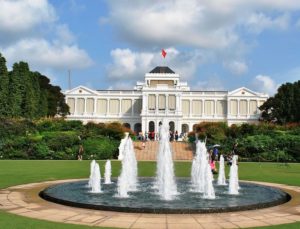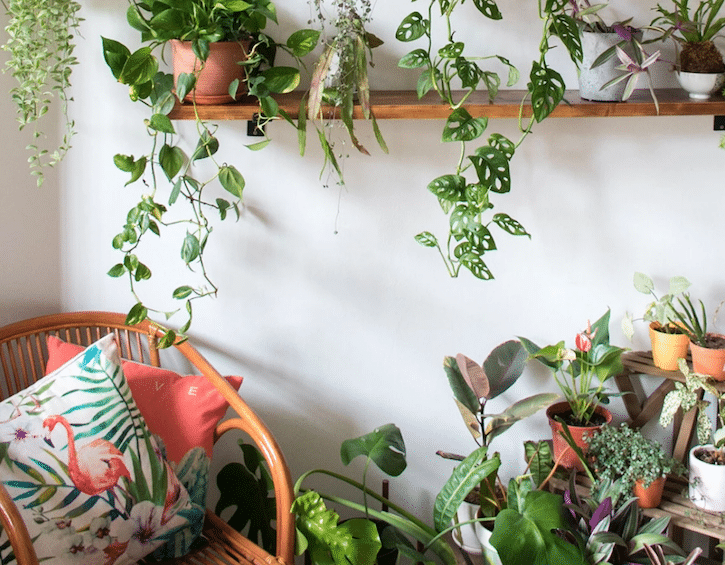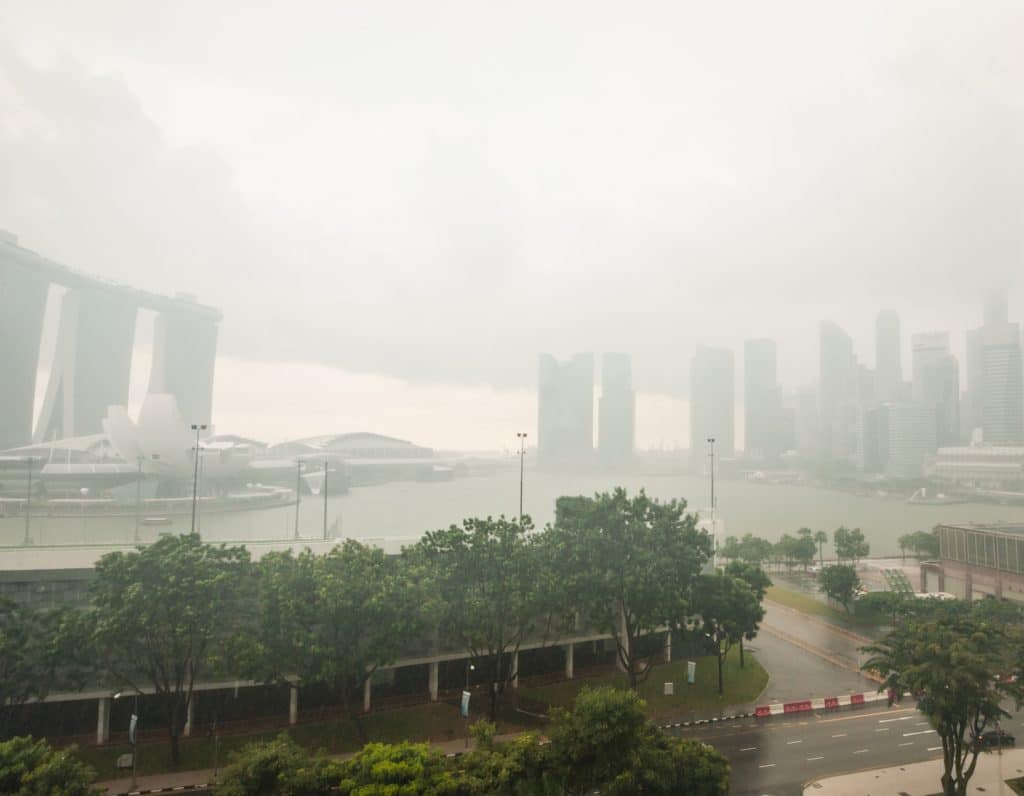
 Post Category - WellnessWellness - Post Category - HealthHealth
Post Category - WellnessWellness - Post Category - HealthHealthThe haze in Singapore is back! Here’s our guide to understanding PM2.5 haze readings and how to keep your kids safe from air pollution in Singapore including what air purifiers and N95 masks to buy
The dreaded haze in Singapore is back this year. The haze readings on 30 September 2023 show that the air quality for PM2.5 is Unhealthy for Sensitive Groups in Central Singapore while the rest of Singapore is Moderate at the moment.
The annual Haze Outlook 2023 report published earlier this year mentioned that there was a significant risk of severe transboundary haze, especially given predictions of extreme dry weather resulting from El Niño. The likelihood of a severe transboundary haze incident was rated Red on a scale of Green (Low Risk), Amber (Medium Risk), and Red (High Risk) so we knew it was coming. But will the haze be as bad as it was in 2015 and 2019? If the El Nino effect is not severe, the haze in Singapore could be more like the 2019 haze rather than the 2015 haze conditions. In Singapore, the 24-hour PSI reading crossed the 300 mark to the hazardous range in 2015, while the reading went beyond 100 to the unhealthy range in 2019. It was a dreadful time and the thought of it is enough to send us breathing deeply in concern!
When there is haze, it’s important to know how to keep your family safe from air pollution especially if you have anyone who is particularly sensitive, so here’s our ultimate guide to dealing with the haze. We bring you info on where to check for hourly updates on Singapore’s air quality, what the haze readings mean (PM2.5 vs PSI), what to do when the haze is bad, and practical advice on making your home as safe as possible, including information on air purifiers, HEPA filters, indoor plants that may help fight air pollution, and where to find N95 masks.
Read More: Best Air Purifiers in Singapore
What is haze?
Haze is a form of air pollution often caused by forest fires in Southeast Asia, which arise when open burning is carried out to clear land for agricultural purposes. This air pollution or haze is made worse by dry seasons, changes in wind direction, and when there is little or no rain in Singapore.
When is haze season in Singapore?
Haze season in Singapore usually lasts from June to September and occasionally into October.
How is air pollution measured? PSI vs PM2.5
According to the National Environment Agency (NEA), PSI stands for Pollutant Standards Index, and gives an indication of air quality based on the 24-hour average of PM2.5 concentration levels among other pollutants (PM10, ozone, sulphur dioxide, nitrogen dioxide and carbon monoxide). The 1-hour PM2.5 levels, however, provide an indication of the current air quality and it’s these particles that you have to worry about. Because of their small size (approximately 1/30th the average width of a human hair), fine particles can lodge deeply into the lungs.
AQICN.org is our go-to website for checking the current status of haze and air pollution in Singapore. This website does a great job of updating the dangerous PM2.5 levels every hour based on data provided by NEA from different areas around Singapore – Central, South, West, East and North – as well as all over the world.
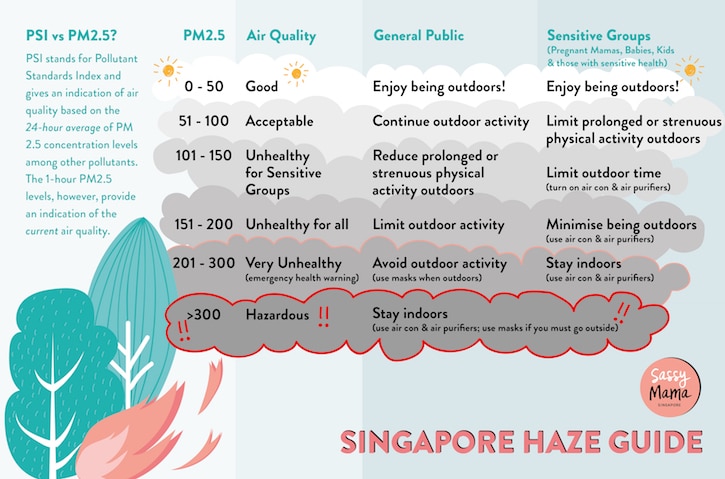
How bad is the haze for your health?
The UK Department for Environment, Food & Rural Affairs says, “The biggest impact of particulate air pollution… is understood to be from long-term exposure to PM2.5, which increases the age-specific mortality risk, particularly from cardiovascular causes.” Studies have shown that continuous exposure over several years to high ambient pollution from PM2.5 may have a higher risk of cardiovascular effects, such as heart attacks, reduced lung development, as well as the development of chronic respiratory diseases, such as asthma, in children.
Haze is not as bad as smoking
Before you go into panic mode, it’s worth putting the haze pollution experienced in Singapore into perspective, as thankfully the haze is not year-round so most of us are not exposed to unhealthy air quality on an ongoing basis. The Straits Times reported that “on a day when PM2.5 levels hit 100mcg per cubic m, a person will take in around 1,100mcg of these pollutants if he or she stays outdoors throughout the day. For comparison, a smoker will inhale between 10,000mcg and 40,000mcg of PM2.5 pollutants for every cigarette consumed.”
Symptoms of haze you may experience during bad pollution
Exposure to particulate matter from haze may cause irritation of the eyes, nose and throat, plus sneezing and coughing may be experienced when the PSI approaches “unhealthy” levels. The very young and very old, those with significant allergies and those with chronic heart or respiratory conditions may be more susceptible to the ill effects of unhealthy air quality.
The air looks and smells fine, so is it really hazy outside?
While you can sometimes smell burning in the air and see a smokey haze, there is no good correlation between air quality readings and burning smells. The PM2.5 may be at an unhealthy range but you may not smell or see this in the air due to the tiny size of the particulate matter, which can enter the lungs and bloodstream. On the other hand, not all burning smells mean haze — some smells can indeed be due to haze from forest and peat fires in Indonesia and the region, but the smell can also be from local fires or other sources of burning.
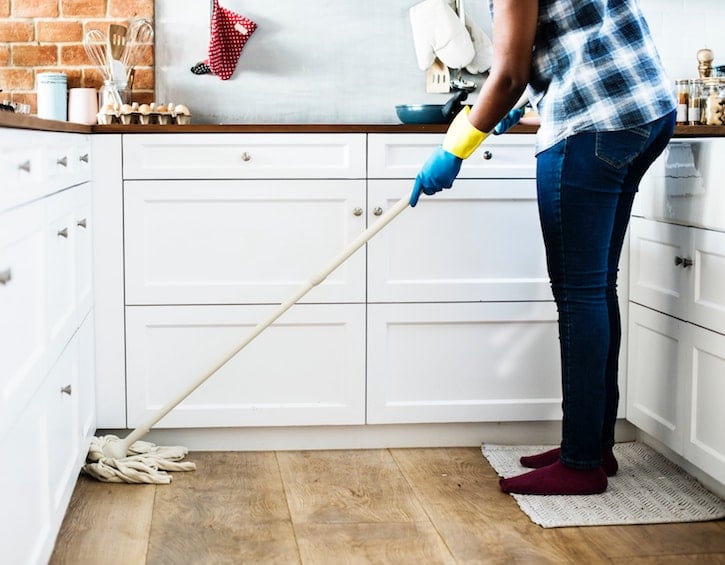
What should I do if the PM2.5 is at unhealthy levels?
To reduce your family’s exposure to haze and the dangerous PM2.5 particles you can:
- Stay out of the haze as much as possible when the air pollution quality veers to unhealthy! This is especially important for children, people with respiratory problems and chronic illnesses, as well as pregnant women. Even if you are healthy and have an N95 mask (more on those below!), you should minimise the time you spend outdoors (and avoid strenuous physical activity outdoors).
- Close doors and windows to reduce the rate of haze particles entering your home.
- Encourage your family to drink lots of pure, filtered water to help flush your body of the residuals from the haze. Keeping your body hydrated also supports your immune system, and a strong immune system is paramount to optimal health.
- Wet-clean your home (mopping) to help remove settled dust particles.
- Use air-conditioners to improve air circulation. If the air-conditioner draws in unfiltered air from outside (e.g. window units), close the outdoor air intake opening.
- Turn on portable air purifiers, especially with highly efficient filters, such as High Efficiency Particulate Air (HEPA) filters to clean the indoor air.
Choosing an air purifier to combat haze
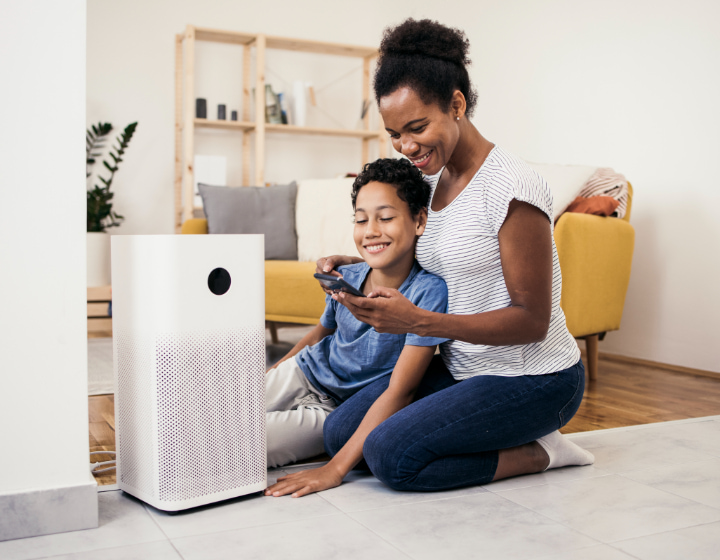
Because of the health risks posed by PM2.5 in the haze, the NEA recommends air purifiers with High Efficiency Particulate Air (HEPA) filters (like the Blue Air purifier) which remove fine particles more effectively. It’s recommended to buy air purifiers with a cleaning capacity (“floor area and flow rate”) that matches the size of the room being cleaned. Some air purifiers are labelled with a clean air delivery rate (CADR), which has three CADR numbers – one each for smoke, dust and pollen. The smoke CADR is the most appropriate for haze pollutants.
The NEA provides a list of air purifier models and suppliers on their website, though they do not endorse any of these air purifiers or companies. Here’s our list of air purifiers to consider.
Best masks to protect from the haze
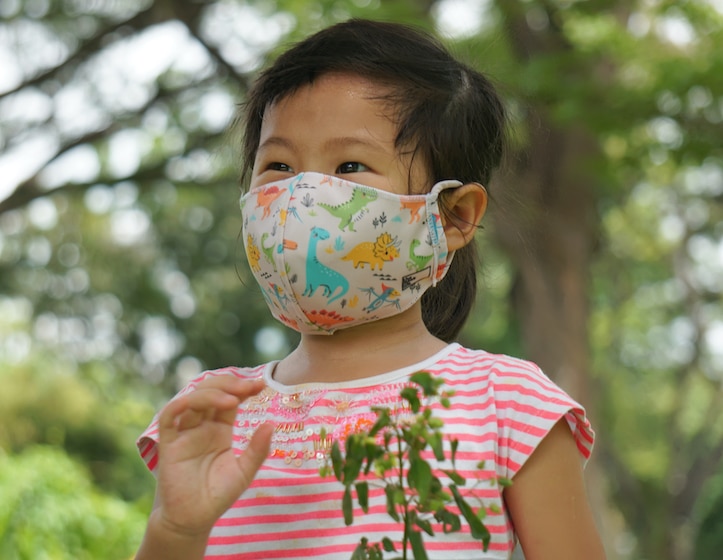
Surgical masks and paper masks do not provide adequate protection from haze. Respiratory masks like the ‘N95’ (available at most pharmacies or medical clinics) filter the air before the person wearing the respirator inhales it. N95 masks need to be properly fitted and correctly worn to be of any use.
Do note however, that a lot of respiratory effort is needed to breathe through these masks and prolonged use can cause headaches (from lack of oxygen) as well as pressure effects on the skin and ear lobes. Young children, some elderly people, people with severe lung disease, breathing problems, heart disease or stroke, and pregnant women in their 2nd and 3rd trimesters should not wear N95 masks unless advised by their doctor. During haze N95 masks are recommended for individuals who need to undertake prolonged and strenuous work outdoors when air quality is in the very unhealthy range.
N95 masks are not needed for short exposure, like commuting from home to school or work in an indoor environment.
The N95 can be reused up to five times unless it gets soiled or distorted in shape. Always check that the N95 mask you are buying is certified by the United States National Institute for Occupational Safety and Health.
Can my older child wear an N95 mask?
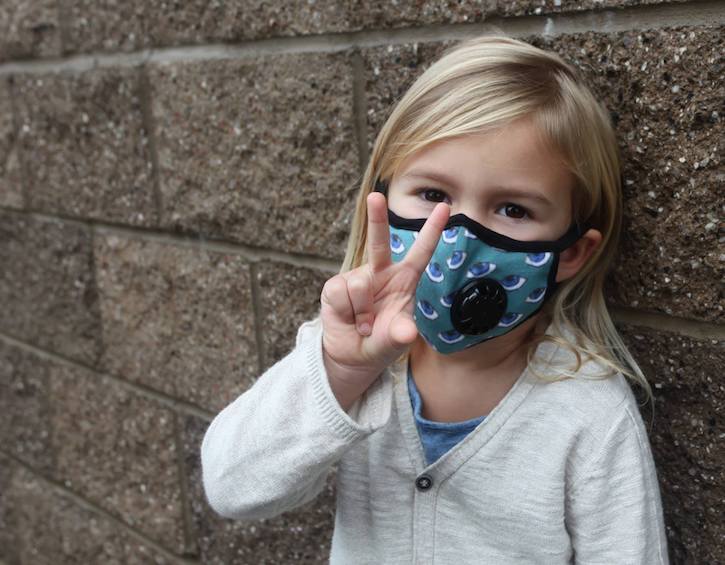
There are plenty of good N95 masks on the market in Singapore that work well for adults but are unsuitable for children as they do not fit young faces perfectly. In addition, children may find it uncomfortable to wear a tight-fitting mask and will very likely adjust the mask that is worn, reducing the effectiveness of the mask.
The best thing to do rather than get children to wear N95 masks is to remember that children should adhere to the recommendation to minimise outdoor activity when the PM2.5 gets to unhealthy levels so it’s better to just not go outside for long periods rather than buy an N95 mask for your child.
If for some reason you do need a child’s mask try Vogmask or Totobobo. Vogmask provides re-usable, washable microfibre masks that “absorb pollution like a sponge”. In addition, Vogmask says its masks “[meet] US FDA 42 CFR Requirements for N99 rating, meaning they outperform N95 masks”. Do note that Vogmask says that masks used by kids under 8 years old require a recommendation of a health provider and adult supervision.
Totobobo is a Singaporean facemask that is now sold worldwide. Totobobo masks are designed to be trimmed by the end-user to fit his or her face and their filters are made to be replaced regularly.
Guardian and Watsons both also carry a brand called Air+ that has N95 masks sized to fit children.
Plants: natural and cheap air purifiers?
Plants can act as an air purifier to some minimal degree according to the NASA Clean Air Study. While staying indoors with windows closed keeps the haze out, the air inside your home may be subject to indoor air pollutants (from cleaning products, for example, or the paint on your wall). Plants produce oxygen (and take in carbon dioxide) but some plants also absorb pollutants like benzene, formaldehyde, trichloroethylene, and xylene. According to TED speaker Kamal Meattle, there are three indoor pollutant-fighting miracle plants:
- Areca Palm: this plant absorbs particulate matter, some of which can lead to heart disease, asthma and a host of other severe health problems.
- Mother-in-Law’s Tongue: many plants take in carbon dioxide and exhale oxygen during the day, but this does this at night so it’s a great one for bedrooms. It also absorbs nitrogen oxide, and cancer-causing formaldehyde.
- Money Plant: this plant also takes in formaldehyde and other building pollutants, plus it also absorbs benzene, an air pollutant found in car exhaust that can cause dizziness, drowsiness and headaches.
If in doubt, seek professional advice
If you or your child is having breathing difficulties it’s always a good idea to seek medical advice as soon as possible.
If the haze does return in Singapore, we hope you’ll breathe easier with these haze tips!
Read more: Stuck Indoors? 5 At-Home Activities to Beat the Haze






 View All
View All


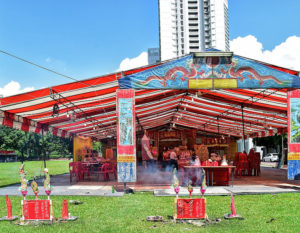

 View All
View All
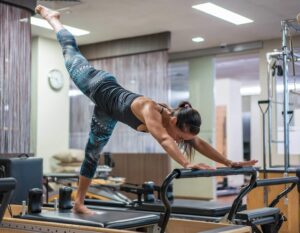
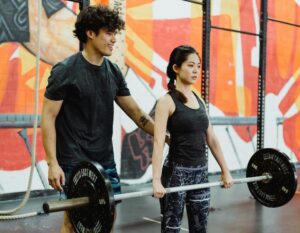





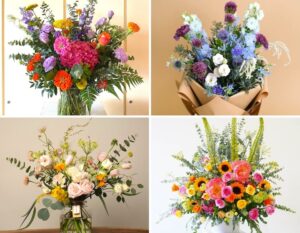


 View All
View All